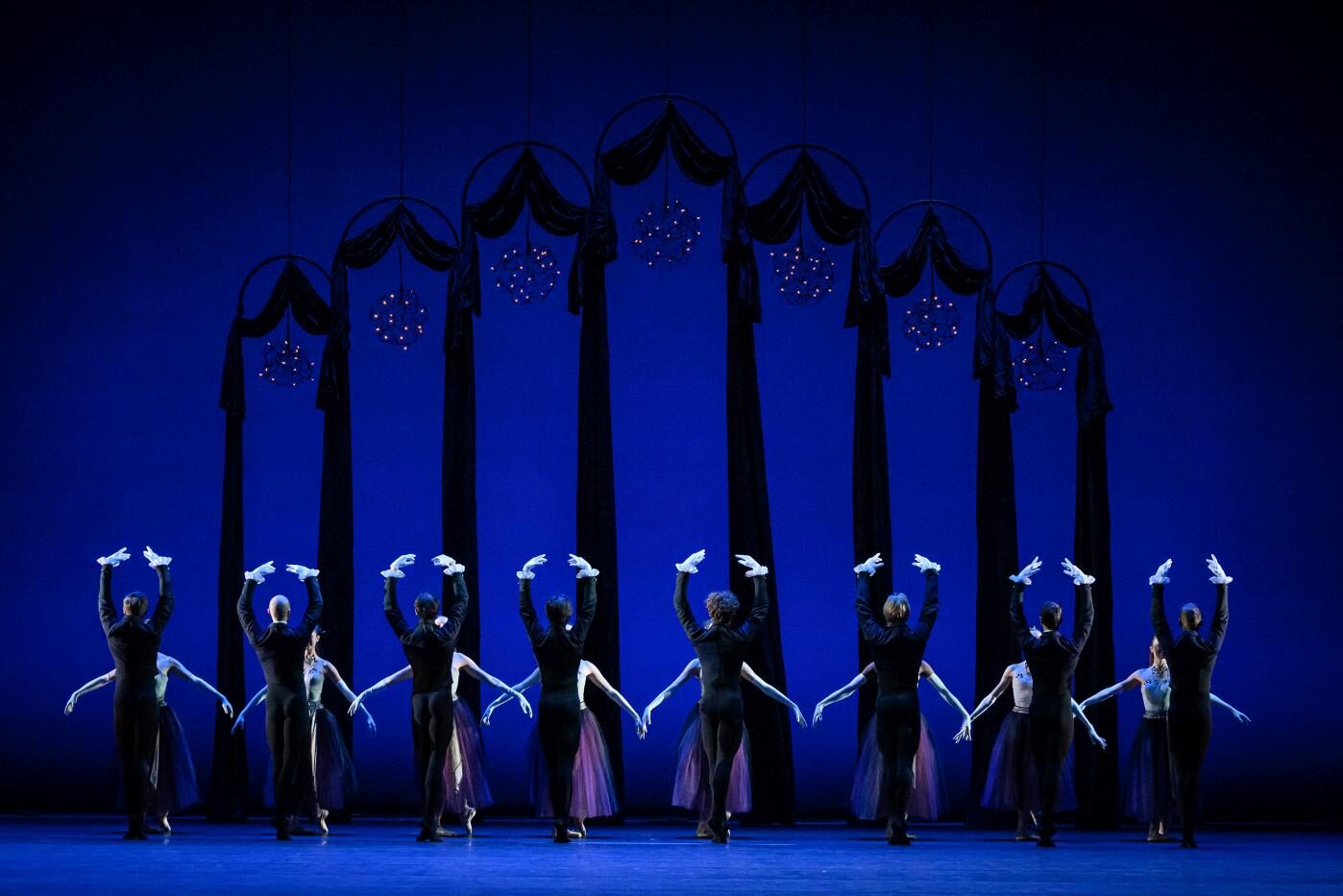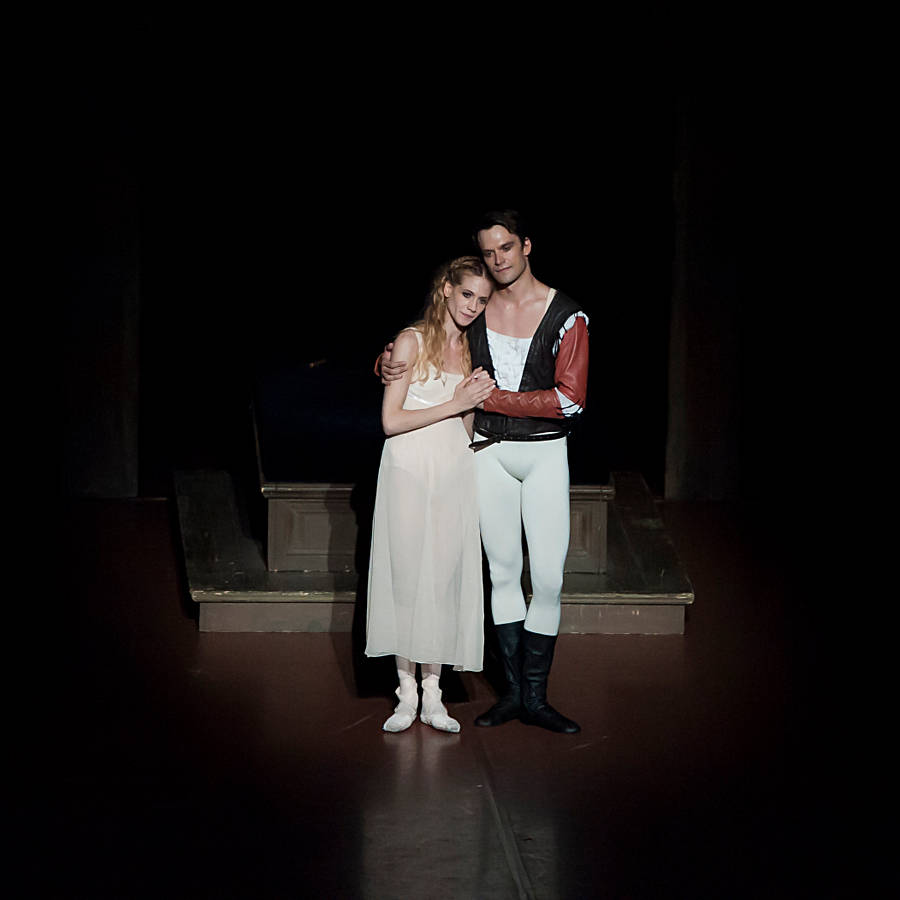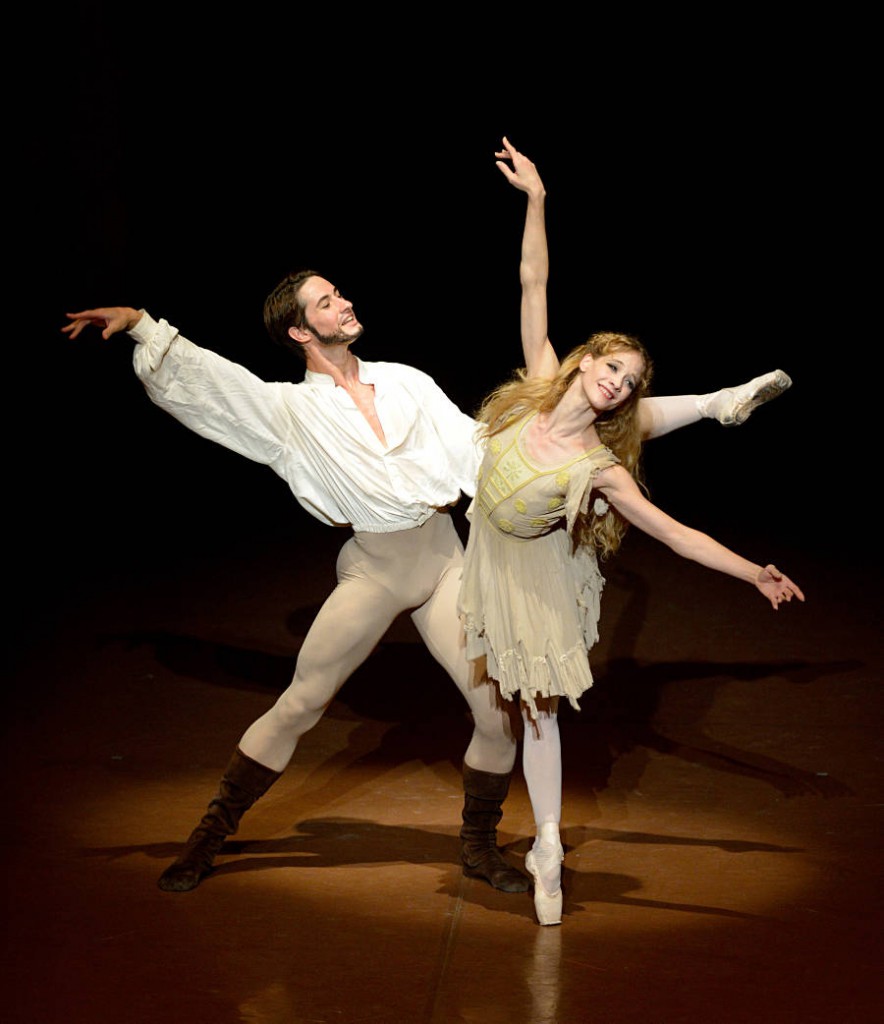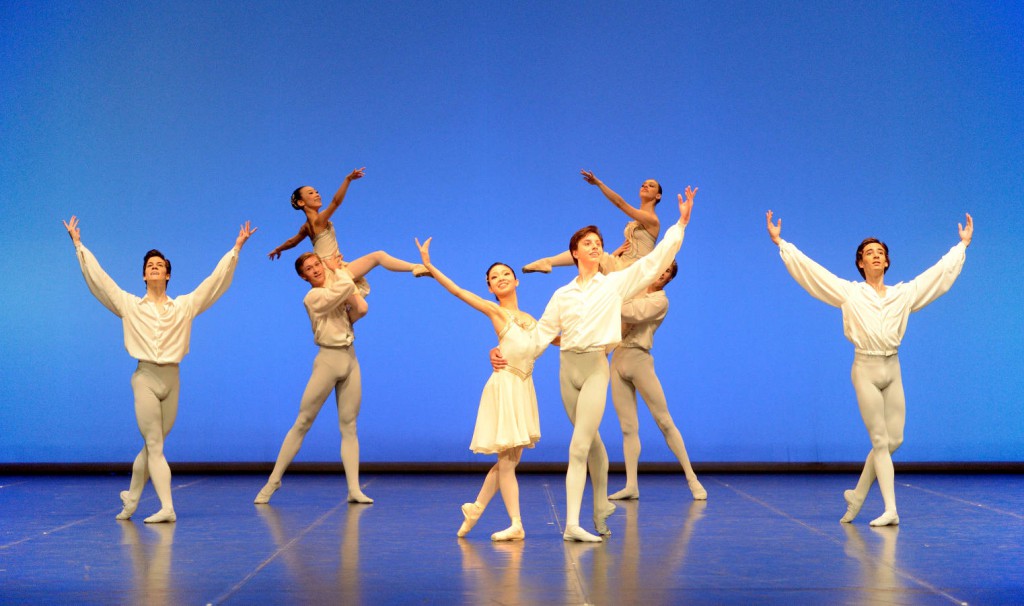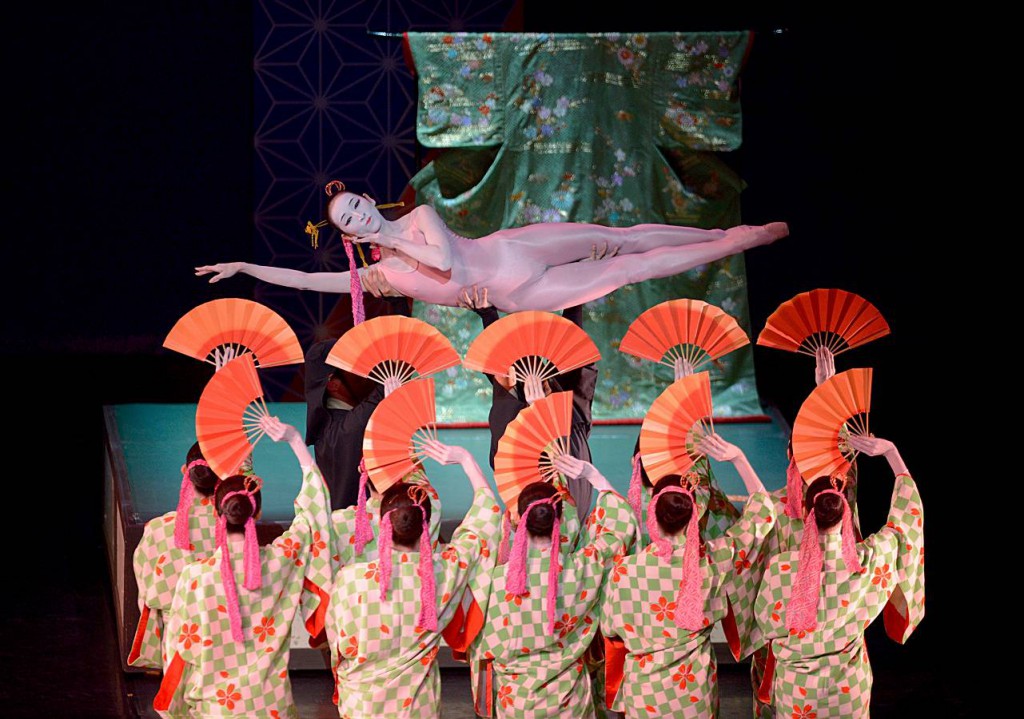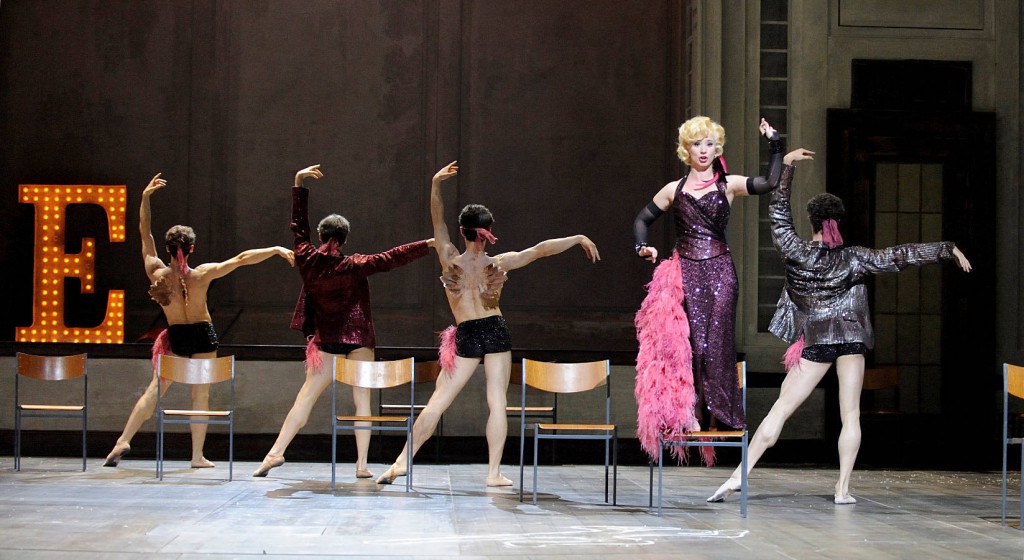Four Re-encounters
“ALL Cranko!” (“Concerto for Flute and Harp”, “Holberg Pas de Deux”, “Opus 1”, “Initials R.B.M.E.”)
Stuttgart Ballet
Stuttgart State Opera
Stuttgart, Germany
May 07, 2015
by Ilona Landgraf
Copyright © 2015 by Ilona Landgraf
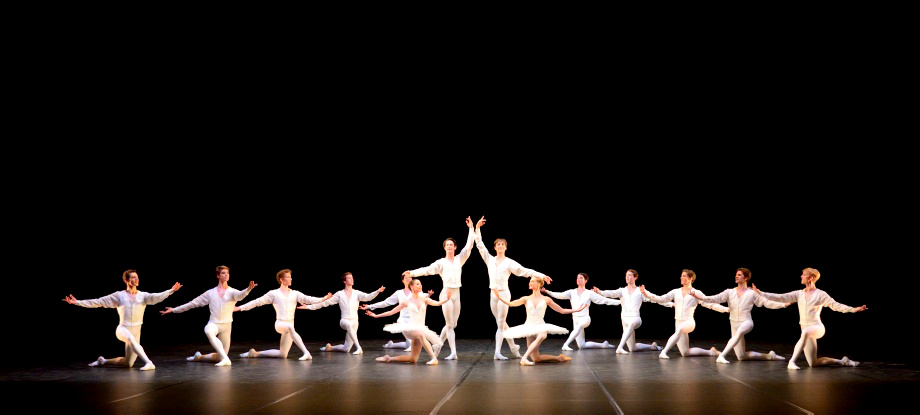 “ALL Cranko!”, Stuttgart Ballet’s new mixed bill, assembles four abstract ballets by John Cranko: the “Concerto for Flute and Harp”, premiered in 1966 and for more than a quarter of a century absent from stage, the “Holberg Pas de Deux” (1967), “Opus 1” (1965) and the repertory’s reliable asset “Initials R.B.M.E”, performed more than 230 times since its premiere in 1972.
“ALL Cranko!”, Stuttgart Ballet’s new mixed bill, assembles four abstract ballets by John Cranko: the “Concerto for Flute and Harp”, premiered in 1966 and for more than a quarter of a century absent from stage, the “Holberg Pas de Deux” (1967), “Opus 1” (1965) and the repertory’s reliable asset “Initials R.B.M.E”, performed more than 230 times since its premiere in 1972.
Certainly many of the older Stuttgart balletomanes remember the original casts, the troupe’s signature dancers Marcia Haydée, Birgit Keil, Egon Madsen, Richard Cragun (1944 – 2012), later also Heinz Clauss (1935 – 2008). They are spoken of with great respect. Critical comparisons thus suggest itself. Would the ballets work with entirely new casts? (more…)
